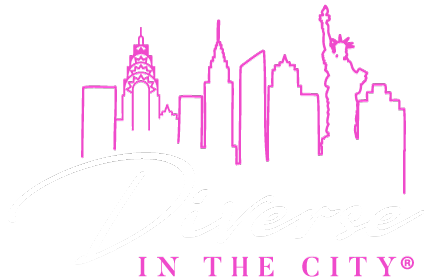
Who decides what’s okay to say?
Kramer from Seinfeld, the little boy in The Emperor’s New Clothes, the court jesters in Shakespearean plays and stand-up comedians all have something in common . . .
They push or even dare to step outside the boundaries of acceptable discourse.
And sometimes they point out what the rest of us were afraid to admit.
❓Do you have that friend you kind of agree with on some topics but are afraid to admit it?
❓Are there social media accounts you follow but are afraid to “like” their posts even though some of them totally resonate?
❓Why do you think that is?
Our acceptable public discourse, sometimes referred to as the Overton window, is the range of views on an issue that are considered socially acceptable. It’s the opinions we feel we can safely express publicly without potentially “getting in trouble.”
🤫 So when we hesitate or hold back from saying what we really think on an issue, we might be worried it falls outside of this window and it might not be worth the risk.
On controversial or potentially controversial topics:
❗️It feels safer when “honest” coincides with “acceptable.”
⁉️But how good is “acceptable” if we can’t be honest?
Diversity topics have our attention right now. How we talk about them can either bring forth honest opinions and efforts, or make it feel unsafe to share the “wrong view” or say the “wrong thing.”
😔 Afraid to step outside the window of acceptable discourse, we might be so careful not to say the wrong thing that what we DO say, doesn’t say much.
😔 And if we aren’t encouraging a safe environment for a wider range of opinions, our attempts to make positive changes can get a lot of agreement, but very little action.
So who decides what’s okay to say?
Actually, we do.
Collectively.
One brave voice at a time.
Even though it feels like someone else already decided.
The window of socially acceptable discourse is flexible, and we play a role in shrinking or expanding it.
Losing the Fear of Speaking Up
“But the Emperor has no clothes!”
The Emperor’s New Clothes

Do you ever feel baffled that something odd is going on but no one is saying anything? And then maybe you wonder:
❓Do they not see it? Or
❓Are they afraid to speak up?
📖 The Emperor’s New Clothes is a fairytale by Hans Christian Andersen about thinking for ourselves and not being afraid to speak up about it.
But this isn’t a fairytale problem.
If you have felt uncomfortable speaking up for fear of judgement or even negative consequences, ask yourself:
•Have you heard others voice disagreement in your environment?
•If so, what was the result?
•If not, do you really think everyone agrees except you?
It can be challenging or intimidating to say things no one seems to be saying.
😟 We might fear not sounding smart enough to understand or sophisticated enough to appreciate something.
😟 We might feel judged as not caring enough or not being a “good enough” person if we disagree.
😧 And it can be outright scary if the climate condemns views outside of those accepted by the majority.
🗣️ But if something doesn’t seem right to us, it might not seem right to a lot of other people too who are just afraid to say it.
‼️ And our fears perpetuate a growing illusion that “everyone else” sees, understands or believes something we don’t.
But I get it.
📖 The young boy in the fairytale wasn’t afraid. He was just a child plainly stating what he saw.
As adults, there’s a lot more to consider.
What can we do?
▪️Start slowly with less “hot” topics.
▪️When a statement feels off, ask for clarification or elaboration. Groupthink is often revealed just by us asking someone to tell us “what they mean.”
▪️Don’t speculate about what others might think of you because you asked a question. What others might think you think is compounded guesswork.
▪️Remember that questioning and thinking for ourselves aren’t crimes or offenses and remind others accordingly.
▪️Subscribe to Diverse in the City®️ where we think, ask and share different perspectives.
And remember,
✨ It’s the person running around naked that appears foolish, not the person noticing.
For Parents and Educators
One of the most important tools we as parents and educators can provide our children is training in the ability to think for themselves.
As elementary schools consider ways to encourage discussions about diversity and inclusion with young children, I encourage parents and educators to start with this foundation:
✏️ Teach our kids to ask questions if something doesn’t sound right. Adults get facts and opinions confused all the time, even when talking to kids and with the best of intentions.
✏️ Remember to listen to what our kids have to say, as many of them still have the gift of innocence that we have lost. Just because they don’t discuss a physical difference doesn’t mean they don’t see it. They just might not interpret it how we do, as they are not biased by a lifetime of experiences.
⚠️ Be careful with phrases like “It’s never too early to teach our kids ____” when it comes to how we relate to one another. Our youngest kids deserve careful consideration before we start planting seeds in their heads, no matter the goal.
Reflection Questions
❓How have you experienced navigating the boundaries of acceptable discourse in your culture or where you live?
❓Can you think of a time you went to teach a child something and discovered your own biases in the process?
❓Do you think children literally get more leeway to point out when “the Emperor has no clothes on” than adults do these days?






